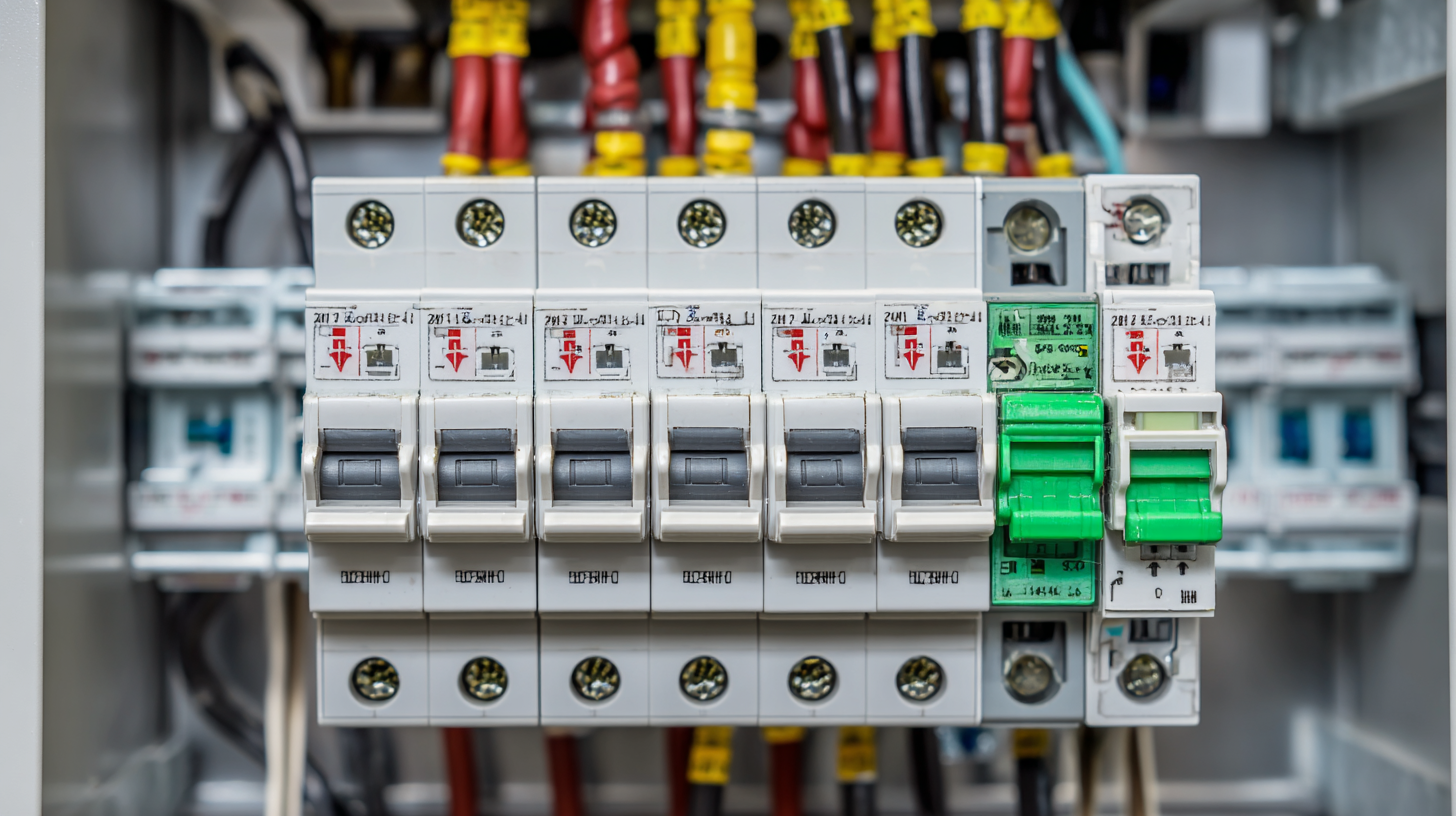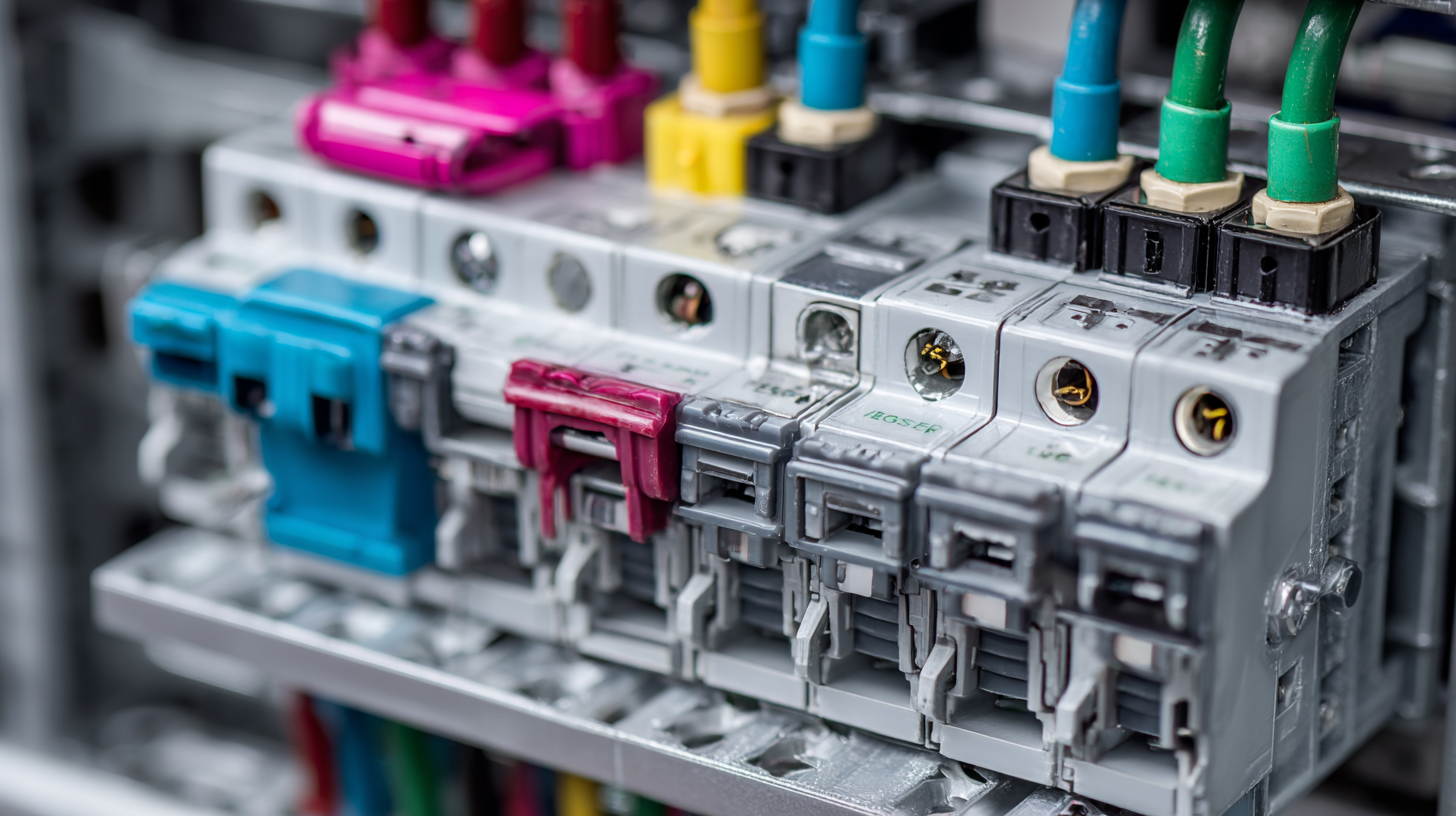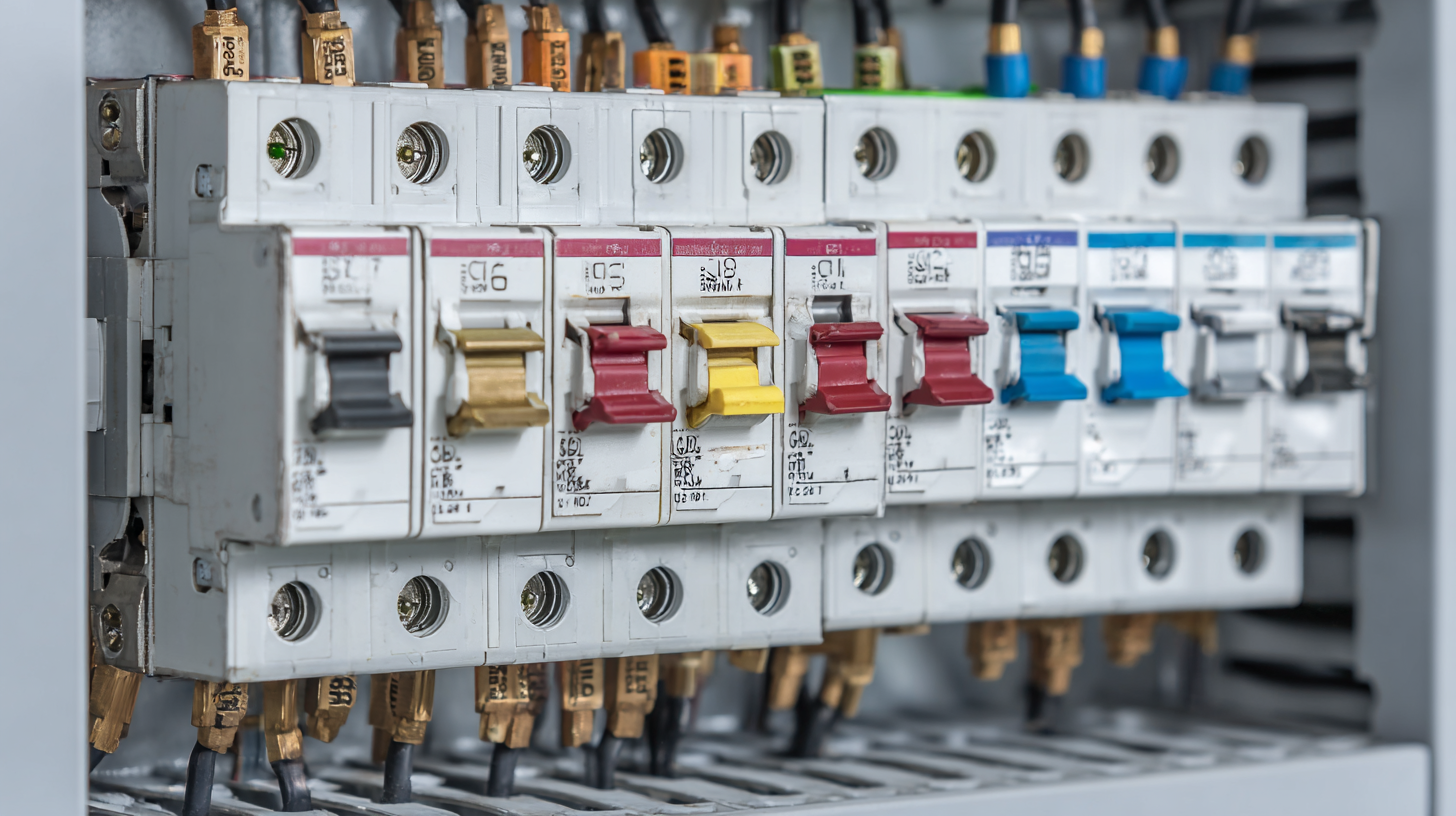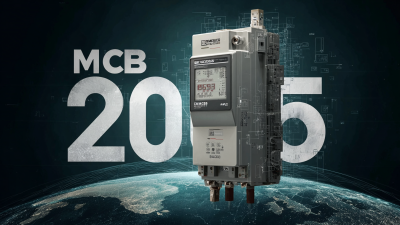Choosing the right circuit breaker is crucial for ensuring the safety and efficiency of your home electrical system. According to the National Fire Protection Association (NFPA), electrical failures or malfunctions were responsible for approximately 13% of home structure fires from 2014 to 2018, emphasizing the need for properly selected circuit breakers. Additionally, reports from the American Electrical Safety Foundation highlight that homes equipped with modern circuit breakers are 40% less likely to experience serious electrical fires compared to those with outdated or incorrectly sized breakers. These devices not only protect against overloads and short circuits but also enhance energy efficiency, making it imperative for homeowners to understand their options.

In this guide, we will explore key factors to consider when selecting a circuit breaker—such as amperage ratings, types of breakers, and compatibility with your existing electrical system—to help you make an informed decision that safeguards your home and family.
When selecting a circuit breaker for your home electrical system, understanding the different types available is crucial. The most common types include standard, GFCI (Ground Fault Circuit Interrupter), and AFCI (Arc Fault Circuit Interrupter) breakers.
Standard circuit breakers are designed to protect your home from overloads and short circuits by automatically shutting off the electrical supply when excessive current is detected.
GFCI breakers, on the other hand, are specifically tailored for areas where water and electricity may come into contact, such as kitchens and bathrooms. They detect ground faults and disconnect the circuit to prevent electric shocks.
AFCI breakers, essential for modern homes, monitor arcs in the wiring that can cause fires. By understanding these distinctions, homeowners can make informed decisions and ensure their electrical systems are safe and efficient.
Assessing your home's electrical load requirements is a critical step in choosing the right circuit breaker for your electrical system. The National Electrical Code (NEC) recommends that homeowners calculate their expected electrical load to ensure safety and efficiency in their electrical setup. This involves adding up the wattage of all appliances and devices that will be connected to the circuit, including large items like refrigerators, air conditioners, and washing machines, as well as smaller electronics. According to the U.S. Department of Energy, the average American home uses about 877 kWh per month, which translates to a peak load of approximately 30 amps.
To accurately assess your load requirements, consider conducting a load calculation based on the type of circuit breaker you plan to install. For instance, a standard 120-volt circuit typically supports a maximum of 15-20 amps, while larger circuits designed for heavy appliances may require breakers rated for 30-50 amps. It’s crucial to ensure that your chosen circuit breaker can handle the load without tripping, which can lead to potential hazards. By understanding the specific needs of your home, you can select the most appropriate circuit breaker type —whether single-pole or double-pole— to maintain the safety and efficiency of your electrical system.
This chart displays the estimated electrical load requirements for various household appliances based on average usage. Understanding these loads can help in selecting the correct circuit breaker for your home.
When selecting a circuit breaker for your home electrical system, understanding voltage and amperage ratings is crucial. Voltage ratings indicate the maximum potential voltage a breaker can handle. In most residential settings, standard voltage ratings are either 120 volts or 240 volts. It's essential to match the breaker’s voltage to your system’s voltage to ensure compatibility and safety. Installing a breaker rated for a higher voltage than your system can result in inadequate protection, while a lower voltage rating may lead to failure during overload conditions.
Amperage ratings, on the other hand, determine the maximum current a circuit breaker can safely handle. Common residential current ratings include 15, 20, and 30 amperes. Choosing the right amperage depends on the specific appliances or circuits you plan to connect. For example, standard outlets usually require a 15 or 20-amp breaker, while larger appliances like air conditioners or dryers may need a 30-amp breaker. It’s vital to assess your electrical load demands accurately, as an undersized breaker may trip frequently due to overload, while an oversized breaker could fail to protect against circuit faults, posing a fire hazard.
When choosing the right circuit breaker for your home electrical system, safety features and technological advancements are critical factors to consider. Modern circuit breakers incorporate various safety mechanisms, such as Ground Fault Circuit Interrupters (GFCIs) and Arc Fault Circuit Interrupters (AFCIs), which monitor electrical currents for anomalies.
 According to a report by the National Fire Protection Association (NFPA), AFCIs prevent approximately 50% of home electrical fires caused by arcing faults, highlighting the importance of these advanced features in safeguarding your home.
According to a report by the National Fire Protection Association (NFPA), AFCIs prevent approximately 50% of home electrical fires caused by arcing faults, highlighting the importance of these advanced features in safeguarding your home.
In addition to GFCIs and AFCIs, the introduction of smart circuit breakers has revolutionized home safety. These devices connect to Wi-Fi and allow homeowners to monitor electrical usage, receive alerts for unusual activity, and even control circuits remotely via a smartphone app. A study by the Energy Information Administration (EIA) estimates that households utilizing smart breakers can reduce energy wastage by up to 15%. By considering these safety technologies and features, homeowners can make informed choices that not only enhance safety but also contribute to energy efficiency.
When it comes to installing circuit breakers in your home electrical system, following best practices is crucial for safety and efficiency. First, always choose a circuit breaker that matches the amperage requirements of the circuit. This ensures that the breaker operates correctly and provides adequate protection against overloads and short circuits.
Moreover, it’s essential to maintain proper spacing between breakers to allow for adequate heat dissipation. This can prevent overheating and extend the lifespan of your circuit breakers. When wiring them, use high-quality, appropriately sized wire to prevent electrical hazards, and ensure that all connections are secure to avoid arcing.
Additionally, label each circuit breaker clearly in your panel. This practice not only helps in identifying circuits easily but also facilitates quicker troubleshooting and repairs in case of an electrical issue. Regularly test your breakers by using their reset function to ensure they are functioning as intended, which promotes a safe home environment.







